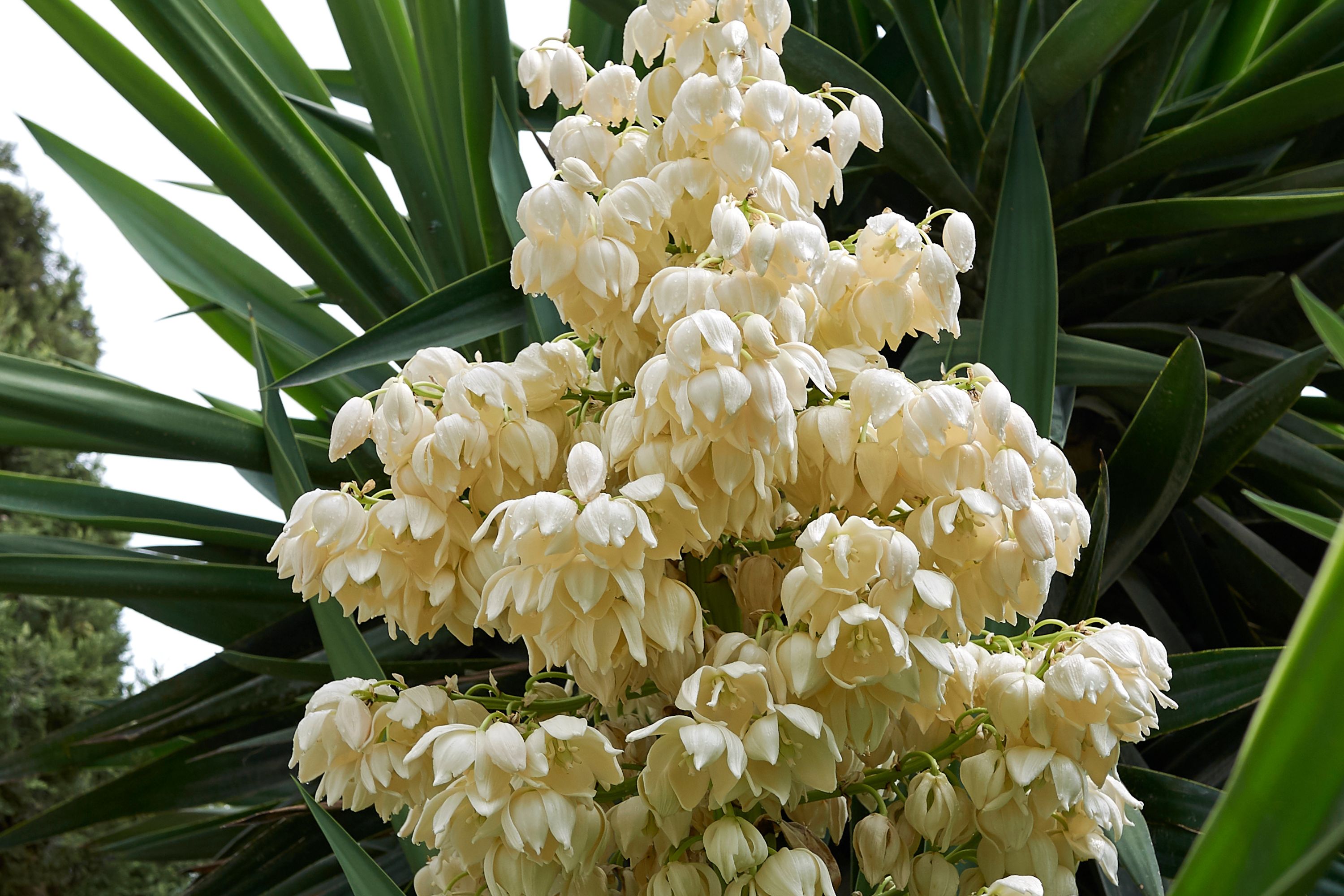Spineless yucca
(Yucca gigantea)

Description
Yucca gigantea, commonly known as the giant yucca or the spineless yucca, is a species of perennial succulent plant belonging to the Asparagaceae family. This plant is native to the arid regions of southern Mexico and Central America, and it is widely grown as an ornamental plant in many parts of the world due to its striking architectural form and drought tolerance. In this article, we will discuss the taxonomy, morphology, distribution, cultivation, and uses of Yucca gigantea. Taxonomy The scientific name of Yucca gigantea is derived from the Latin word "giganteus," meaning giant, referring to its large size. It was first described by the German botanist Karl Heinrich Koch in 1856. The plant belongs to the Asparagaceae family, subfamily Agavoideae, tribe Yucca, and genus Yucca. There are currently around 40 species of yucca plants, most of which are native to North America. Morphology Yucca gigantea is a large succulent plant that can grow up to 10 meters (33 feet) tall in its natural habitat, but it typically grows to around 4-6 meters (13-20 feet) tall in cultivation. It has a single trunk that can reach a diameter of up to 30 centimeters (12 inches) at the base and is usually unbranched. The leaves are evergreen, sword-shaped, and grow up to 150 centimeters (5 feet) long and 7.5 centimeters (3 inches) wide. They are arranged in a rosette at the top of the trunk, and their edges are finely toothed. The leaves are a bluish-green color and have a waxy surface that helps to prevent water loss. The inflorescence of Yucca gigantea is a large, branched panicle that can reach up to 1.5 meters (5 feet) long. The flowers are bell-shaped, around 7.5 centimeters (3 inches) long, and are usually white or cream-colored. They have six tepals (three petals and three sepals), and the flowers are pollinated by yucca moths. The fruit of Yucca gigantea is a dry, indehiscent capsule that contains numerous black seeds. Distribution Yucca gigantea is native to southern Mexico and Central America, where it grows in arid and semi-arid regions at elevations of up to 1,800 meters (5,900 feet) above sea level. Its natural range includes the states of Oaxaca, Puebla, and Veracruz in Mexico, as well as Guatemala, Honduras, and El Salvador. In its natural habitat, Yucca gigantea is an important plant for the ecosystem as it provides food and habitat for a variety of animals, including birds, bats, and insects. Cultivation Yucca gigantea is a popular ornamental plant in many parts of the world due to its striking architectural form and drought tolerance. It is a hardy plant that can grow in a variety of soil types, as long as they are well-draining. The plant prefers full sun to partial shade and is tolerant of a wide range of temperatures, although it is not frost tolerant. It can be propagated by seed or by removing offsets (pups) from the base of the plant. When grown in cultivation, Yucca gigantea does not require regular watering and is best left to dry out between waterings. Overwatering can cause root rot and other problems. The plant is relatively low maintenance and does not require fertilization.
Taxonomic tree:







